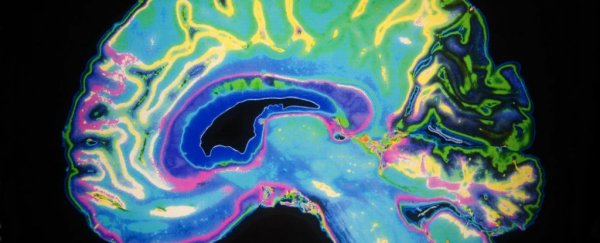A study using epilepsy patients undergoing surgery has given neuroscientists an opportunity to track in unprecedented detail the movement of a thought through the human brain, all the way from inspiration to response.
The findings, published in 2018, confirmed the role of the prefrontal cortex as the coordinator of complex interactions between different regions, linking our perception with action and serving as what can be considered the "glue of cognition".
Previous efforts to measure the passing of information from one area to the other have relied on processes such as electroencephalography (EEG) or functional magnetic resonance imaging (fMRI), which, while non-invasive, offer less than perfect resolution.
The study led by researchers from the University of California, Berkley, recorded the electrical activity of neurons using a precise technique called electrocorticograhy (ECoG).
This required hundreds of tiny electrodes to be placed right up against the cortex, providing more spatial detail than EEG and improving the resolution in time of fMRI.
While this poses an unethical level of risk for your average volunteer, patients undergoing surgery for epilepsy have their brain activity monitored in this very way, giving the researchers a perfect chance to conduct a few tests.
Each of the 16 test subjects performed a number of tasks varied to suit their individual arrangement of electrodes, all while having their neural activity monitored and tracked.
Participants were required to listen to a stimulus and respond, or watch images of faces or animals on a screen and asked to perform an action.
Some tasks were more complex than others; for example, a simple action involved simply repeating a word, while a more complex version was to think of its antonym.
Researchers monitored the split-second movement of electrical activity from one area – such as areas associated with interpreting auditory stimuli – to the prefrontal cortex, to areas required to shape an action, such as the motor cortex.
While none of this threw up any surprises, the results clearly emphasized the role of the prefrontal cortex in directing activity.
For some tasks its input was fairly limited. In others the area was required to work hard, managing signals from multiple parts of the brain to coordinate the recognition of words, possibly dredging up memories before setting to work a bunch of muscles to provide a novel answer.
"These very selective studies have found that the frontal cortex is the orchestrator, linking things together for a final output," neuroscientist Robert Knight from UC Berkeley said at the time.
"It's the glue of cognition."
The prefrontal cortex was seen to remain active throughout most of the thought process, as would be expected for a multitasking region of the brain.
The quicker the handoff from one area to the other, the faster people responded to a stimulus.
"fMRI studies often find that when a task gets progressively harder, we see more activity in the brain, and the prefrontal cortex in particular," said the study's lead author, neuroscientist Avgusta Shestyuk.
"Here, we are able to see that this is not because the neurons are working really, really hard and firing all the time, but rather, more areas of the cortex are getting recruited."
What did come as something of a surprise were details on the precise timing of each area.
Some of the responding areas lit up remarkably early, often during the stimulus, suggesting that even before we have a complete response handy, our brain is already getting those parts of the cortex ready for action.
"This might explain why people sometimes say things before they think," suggests Shestyuk.
This research was published in Nature Human Behaviour.
A version of this article was originally published in January 2018.
